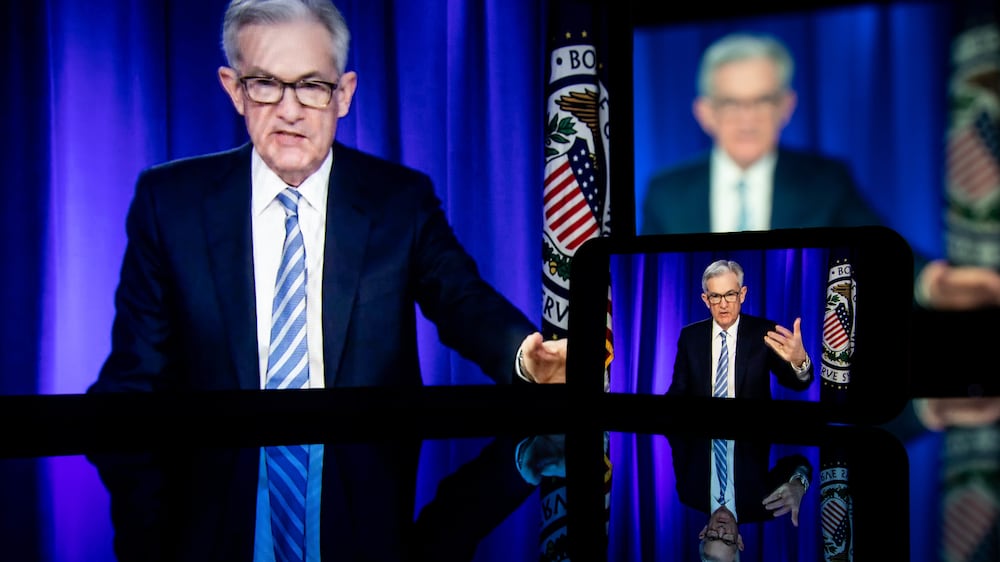The US Federal Reserve will quicken the pace at which it is pulling back its support for the post-pandemic US economy as inflation surges and it expects to raise interest rates three times next year.
In an abrupt policy shift, the Fed announced on Wednesday that it will shrink its monthly bond purchases at twice the pace it previously announced, likely ending them altogether in March.
The bond purchases were intended to hold down long-term rates to aid the economy but are no longer needed with unemployment falling and inflation at a near 40-year high. The accelerated timetable puts the Fed on a path to start raising rates in the first half of next year.
“Economic activity is on track to expand at a robust pace this year, reflecting progress on vaccinations and the reopening of the economy,” Fed Chair Jerome Powell said in remarks on Wednesday.
The Fed’s new forecast that it will raise its benchmark short-term rate three times next year is up from only one rate increase it had projected in September. The Fed’s key rate, now pinned near zero, influences many consumer and business loans, whose rates would also probably rise.
The policy change the Fed announced in a statement after its latest meeting had been signalled in remarks chairman Jerome Powell gave to Congress two weeks ago. The shift marked Mr Powell’s acknowledgement that with inflation pressures rising, the Fed needed to begin tightening credit for consumers and businesses faster than he had thought a few weeks earlier.
The Fed had earlier characterised the inflation spike as mainly a “transitory” problem that would fade as supply bottlenecks caused by the pandemic were resolved.
“The path of the economy continues to depend on the course of the virus. Progress on vaccinations and an easing of supply constraints are expected to support continued gains in economic activity and employment as well as a reduction in inflation,” the Fed said in a post-meeting statement.
But the run-up in prices has persisted longer than the Fed expected and has spread from goods like food, energy and cars to services like apartment rents, restaurant meals and hotel rooms.
In response, the Fed is shifting its attention away from reducing unemployment, which has fallen quickly to a healthy 4.2 per cent, down from 4.8 per cent at its last meeting, and towards reining in higher prices.
Consumer prices soared 6.8 per cent in November compared with a year earlier, the government said last week, the fastest pace in nearly four decades.
The Fed’s new policy shift does carry risks. Raising borrowing costs too quickly could stifle consumer and business spending. That, in turn, would weaken the economy and likely raise unemployment.
Yet if the Fed waits too long to raise rates, inflation could surge out of control. It might then have to act aggressively to tighten credit and potentially trigger another recession.
Fed officials have said they expect inflation to cool by the second half of next year. Petrol prices have already come off their peaks. Supply chain bottlenecks in some areas are gradually easing. And government stimulus payments, which helped spur a spike in spending that boosted inflation, are not likely to return.
Yet many economists expect high prices to persist. That likelihood was reinforced this week by a government report that wholesale inflation jumped 9.6 per cent for the 12 months ending in November, the fastest year-over-year pace on records dating to 2010.






